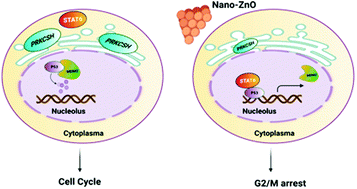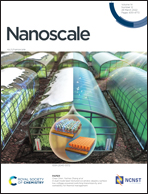Potential role of PRKCSH in lung cancer: bioinformatics analysis and a case study of Nano ZnO†
Abstract
PRKCSH, also known as glucosidase II beta, functions as a contributor to lung tumorigenesis by regulating the cell cycle in a p53-dependent manner under severe environmental stress. However, the prognostic value and molecular mechanisms by which the level of PRKCSH is significantly increased in cancer cells are not clearly understood. Here, we first generated a biological profile of PRKCSH expression changes in cancers by analysing bioinformatic data from cancer databases. We found that higher PRKCSH expression was correlated with a poorer prognosis and greater infiltration of most immune cell types in patients with lung cancer. In particular, PRKCSH expression showed significant negative correlations with the level of STAT6 (r = −0.31, p < 0.001) in lung cancer tissues. We further found that PRKCSH deficiency promoted G2/M arrest in response to zinc oxide nanoparticle (Nano ZnO) treatment in A549 cells. With regard to the mechanism, PRKCSH deficiency may induce STAT6 translocation to the nucleus to activate p53 expression through binding to the p53 promoter region from −365 bp to +126 bp. Eventually, activated p53 contributed to Nano-ZnO-induced G2/M arrest in lung cancer cells. Taken together, our data provide new insights into immunotherapy target choices and the prognostic value of PRKCSH. Since the G2/M cell cycle checkpoint is crucial for lung cancer prognosis, targeting PRKCSH expression to suppress the activation of the STAT6/p53 pathway is a potential therapeutic strategy for managing lung cancer.



 Please wait while we load your content...
Please wait while we load your content...